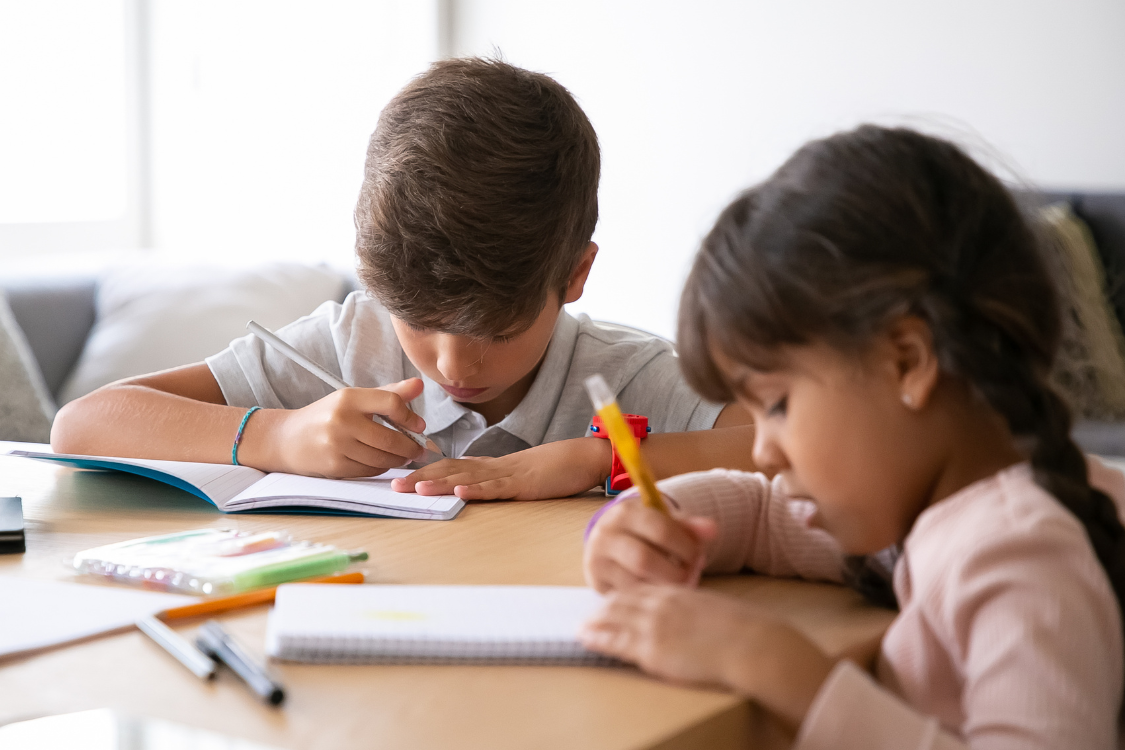Watch your child carefully sound out each letter: “C… A… T.” They know all the sounds perfectly, but when you ask them what word they just read, they look at you with confusion. Sound familiar? This is where blending skills come in—the magical ability to smoosh individual sounds together into recognizable words. It’s the moment when letters transform into language, and every child can learn to do it with the right approach.
What Blending Really Means (And Why It Matters)
Blending is simply taking individual letter sounds and pushing them together to make a word. Think of it like making a smoothie—you have separate ingredients (sounds) that need to get mixed together (blended) to create something new and delicious (a word your child can recognize and understand).
Some children naturally figure out how to blend sounds, while others need more explicit instruction and practice. Neither way is wrong—it’s just how different brains work. The key is giving your child the tools they need to succeed, regardless of how their brain processes sounds.
When children master blending, reading suddenly clicks. They stop seeing random letters and start seeing words they know. It’s one of the most exciting breakthroughs in a child’s reading development.
Tip 1: Start With Continuous Sounds
Begin blending practice with sounds that you can stretch out, like /m/, /s/, /f/, /l/, and /n/. These “continuous sounds” are easier to blend because you can hold them longer without distorting them. Try words like “sun,” “mat,” or “fan.”
Say the sounds slowly and continuously: “mmmmaaaammmm” for “mom” or “sssssssaaaaaannnnnn” for “sun.” This helps children hear how sounds flow together naturally. Once they get comfortable with continuous sounds, you can introduce stop sounds like /b/, /t/, and /p/.
Tip 2: Use The “Sound And Sweep” Method
Place three letter tiles or write letters with spaces between them: C A T. Point to each letter and say its sound, then sweep your finger smoothly from left to right while blending the sounds together. The physical motion helps children understand that blending is a flowing process, not a choppy one.
Your finger movement should match your voice—start slow and separate, then smooth and connected. This visual and kinesthetic approach helps children who need more than just auditory instruction.
Tip 3: Make It Snappy With “Quick Blending”
Once your child can blend slowly, speed up the process. Instead of “C… A… T,” try “C-A-T” with shorter pauses between sounds. The goal is to make the blending so quick that it almost sounds like the word itself.
Practice this like a game: “Can you blend this word super fast?” Kids love the challenge, and the faster pace actually makes it easier for them to hear the word. Think of it like connecting train cars—the faster they connect, the smoother the ride.
Tip 4: Use Your Whole Body
Get your child moving while they blend. Have them clap for each sound, then bring their hands together for the blended word. Or try “sound stepping”—take one step forward for each sound, then jump forward for the final word.
Physical movement helps cement the concept in their minds. Some children learn better when their whole body is involved, and it makes the practice more fun and memorable.
Tip 5: Practice With Word Families
Focus on word families like -at, -an, -it, or -op. Once your child can blend “cat,” try “bat,” “hat,” and “rat.” This approach builds confidence because they’re using the same blending pattern with different beginning sounds.
Word families also help children see patterns in words, which makes future reading easier. Start with simple three-letter words and gradually add more complex patterns as your child becomes more confident.
Tip 6: Play Blending Games Throughout The Day
Turn blending into a game during everyday activities. While cooking, ask your child to blend ingredient names: “Can you blend P-O-T?” During car rides, play “I Spy” with blending: “I spy something that starts with C-A-R.”
The more opportunities your child has to practice blending in natural, fun ways, the more automatic it becomes. Don’t make it feel like work—make it feel like play.
Tip 7: Be Patient And Celebrate Small Wins
Some children master blending quickly, while others need weeks or months of practice. Both timelines are completely normal. Celebrate every success, no matter how small. Did your child blend their first word? That’s huge! Did they blend a word slightly faster than yesterday? Amazing progress!
Remember that blending is a skill that develops over time. Some days will be better than others, and that’s okay. Your patience and encouragement are the most important ingredients in your child’s reading success.
Common Blending Mistakes To Avoid
Don’t add extra sounds to letters. The letter “b” makes the sound /b/, not “buh.” Those extra sounds make blending much harder because children try to blend sounds that aren’t actually there.
Don’t expect perfection immediately. Blending is a complex skill that takes time to develop. Focus on progress, not perfection, and remember that every child learns at their own pace.
Don’t skip the slow blending phase. While the goal is quick, automatic blending, children need to start slowly to understand the concept. Let them take their time in the beginning.
When Blending Clicks, Everything Changes
The moment your child successfully blends their first word is magical. You’ll see the light bulb go on in their eyes as they realize those individual sounds they’ve been learning actually make words they know. It’s the bridge between knowing letters and actually reading.
Once blending becomes automatic, your child will start reading words everywhere—on signs, in books, on cereal boxes. The world becomes full of readable text, and that’s when reading truly becomes enjoyable.
Your Child’s Blending Success Starts Now
Blending skills are the foundation of independent reading. With these seven tips, you have everything you need to help your child master this crucial skill. Remember, every child can learn to blend—some just need more practice and patience than others.
The Reading.com app provides systematic blending practice that builds on these techniques, giving your child the structured support they need to master this essential skill. Ready to watch your child’s reading confidence soar? Start your free 7-day trial and give your child the gift of reading success.





